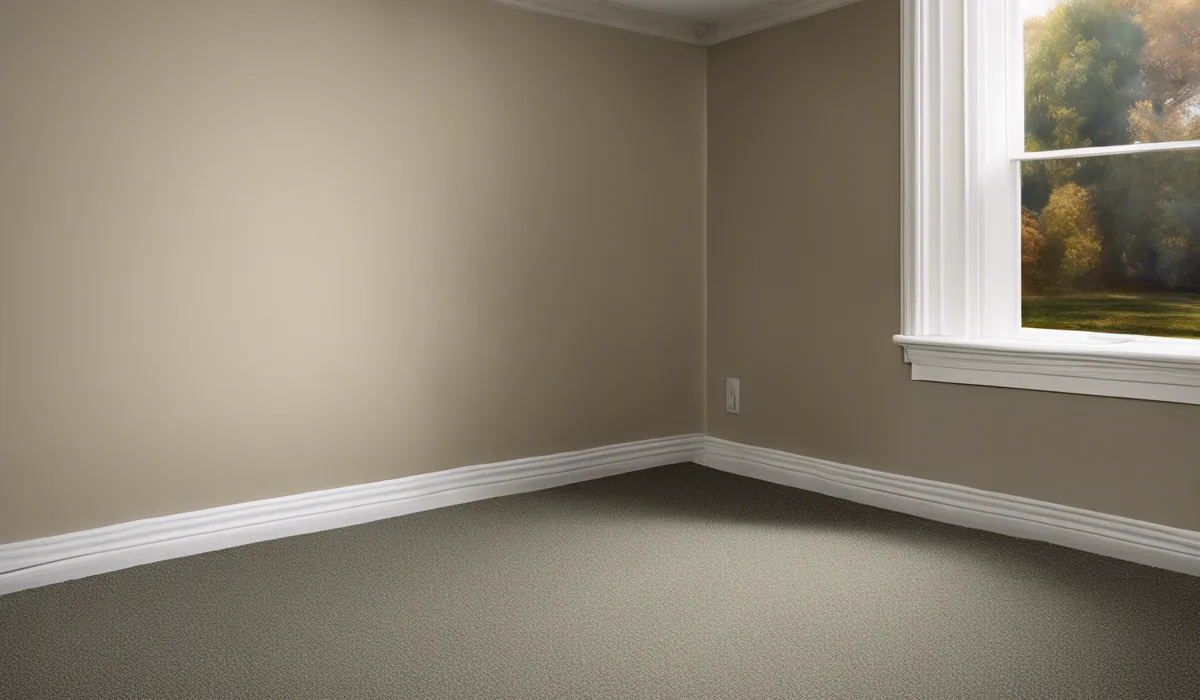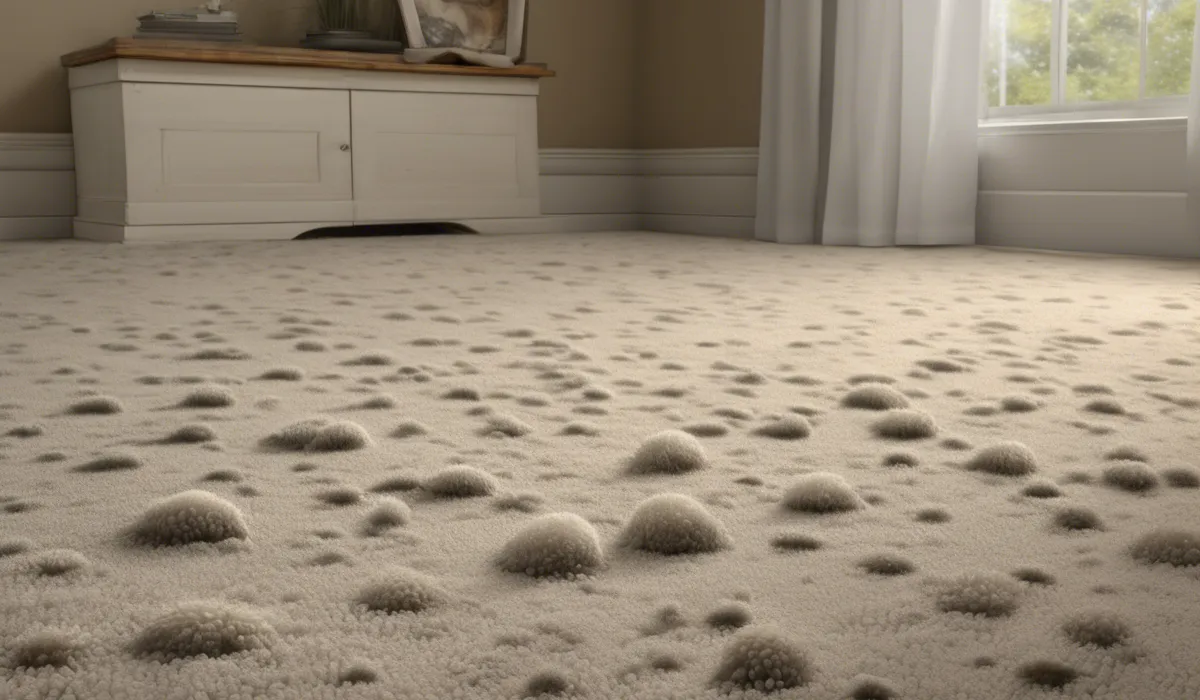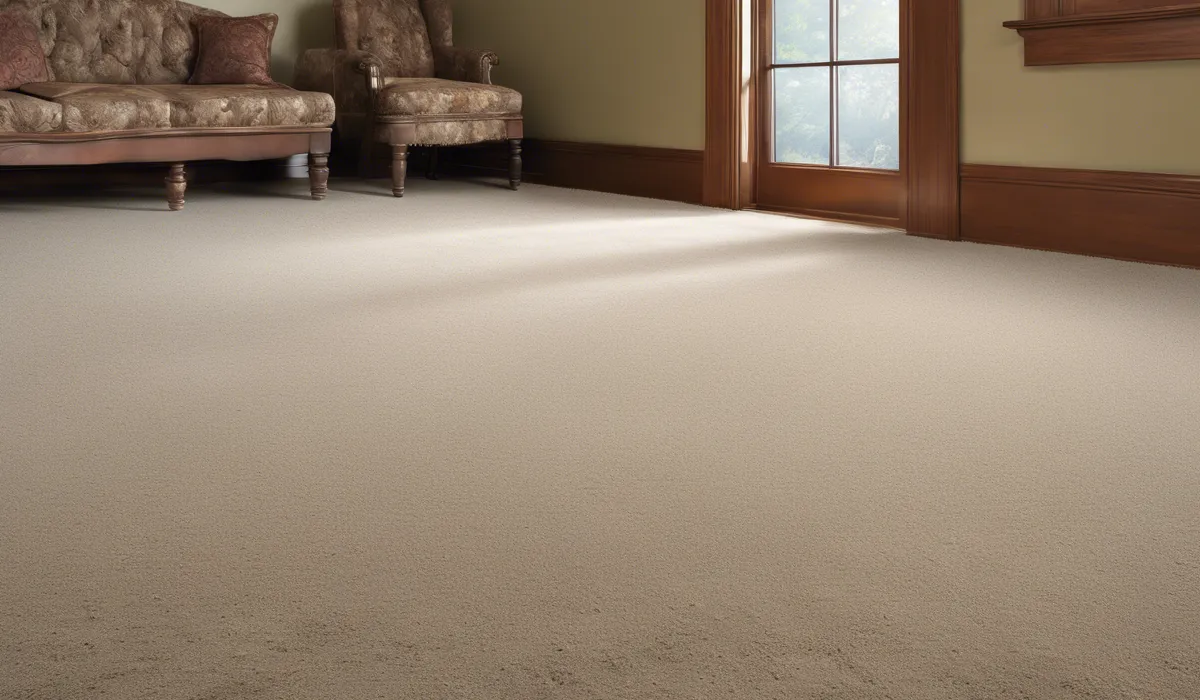Yes, mold can grow under carpets due to moisture, organic material, and warmth. Leaks, spills, or high humidity can contribute to mold growth. It’s crucial to keep the area dry and clean to prevent this issue.
Causes and Conditions for Mold Growth Under Carpet

Understanding Mold’s Basic Needs
Mold is a living organism that requires certain conditions to grow. Underneath your carpet, an ideal environment can sometimes be found for mold to thrive.
These conditions include the presence of moisture, warmth, and food, which in this case, is often the carpet itself or the dirt and debris within it.
The Role of Moisture and Humidity
Moisture is the primary factor that can lead to mold growth under carpets. Sources of moisture may include high humidity in the home, spills that are not properly cleaned up, or water damage from leaks.
When the carpet remains wet for a prolonged period, it creates the perfect conditions for mold spores to settle and grow.
Importance of Air Circulation
Poor ventilation can contribute to moisture retention under carpets. Rooms with little to no airflow allow dampness to persist, which can facilitate mold growth.
Ensuring that rooms are well-ventilated is key to preventing moisture from becoming trapped under carpeting.
Consequences of Spills and Water Damage
Accidental spills or incidents of water damage are often the culprits behind mold under carpets.
If water is allowed to soak into the carpet and padding and is not dried out quickly, it can create a hidden mold problem. It is crucial to address these issues promptly to prevent mold from taking hold.
Organic Material as Mold’s Buffet
Your carpet fibers and any organic debris, like skin cells or food particles, can serve as a food source for mold.
Regular cleaning is essential to remove these potential nutrients for mold and to maintain a healthy living environment.
Temperature’s Impact on Mold Proliferation
Temperature also plays a significant role in mold growth. Mold typically thrives in warm conditions.
If the temperature under your carpet is consistently warm and combined with moisture, it becomes a haven for mold to flourish.
Health Risks and Signs of Mold Under Carpet

Detecting Musty Odors and Allergies
A strong, musty odor can be a telltale sign of mold under your carpet. If you notice an unpleasant smell or if household members start experiencing allergy symptoms like sneezing or itchy eyes, these could be indicators of a mold issue.
Visible Signs of Mold
While mold under carpet is often hidden, signs of a problem may appear around the edges or at seams where mold can become visible. If you see any discoloration or fuzzy growth, it’s important to investigate further.
Carpet and Floor Deterioration
Mold can lead to the discoloration and breakdown of both your carpet and the floor beneath it.
If you notice that the carpet seems to be deteriorating or the floor feels weak or spongy, these could be signs that mold is present and causing damage.
Respiratory Issues from Mold Exposure
Exposure to mold can cause a range of health problems, particularly for those with respiratory issues or weakened immune systems.
Symptoms such as coughing, wheezing, or difficulty breathing should be taken seriously, especially if they occur alongside other signs of mold.
Prevention and Remediation Strategies

Ensuring Proper Carpet Installation
Properly installing your carpet can prevent many mold issues. This includes making sure the subfloor is completely dry before laying the carpet and choosing padding that is mold-resistant.
Regular maintenance, such as vacuuming and professional cleaning, also plays a critical role in preventing mold.
Tackling Spills and Moisture Quickly
When spills occur, it is vital to act fast. Removing moisture quickly and using fans or dehumidifiers to dry out the area can stop mold before it starts.
For more significant water damage, such as from flooding or leaks, it may be necessary to remove the carpet to dry the subfloor thoroughly.
Utilizing Dehumidifiers and Ventilation
Dehumidifiers can help maintain an environment that is less conducive to mold growth by reducing humidity levels.
Additionally, ensuring that your home has good ventilation will help to circulate air and keep moisture levels in check.
Seeking Professional Mold Assessments
If you suspect mold under your carpet, a professional mold assessment can be an important step.
Experts can determine the extent of the problem and recommend the best course of action for remediation.
When to Replace Your Carpet?
In some cases, cleaning or treating the mold may not be enough, and the carpet will need to be replaced.
This is often the case when the mold infestation is severe or if the carpet and padding have been damaged beyond repair.
FAQs About Mold Growth Under Carpet
Can mold grow under carpets even in dry climates?
Yes, mold can grow under carpets in dry climates if there are sources of moisture such as spills, leaks, or high humidity within the home.
What conditions are necessary for mold to grow under a carpet?
Mold requires moisture, organic material, and warmth to grow under carpets. These conditions can occur from leaks, spills, or high indoor humidity.
How can I prevent mold from growing under my carpet?
To prevent mold growth, keep the area dry and clean, manage indoor humidity levels, and promptly address any leaks or spills.
How do I know if there is mold growing under my carpet?
Signs of mold under carpets include a musty smell, discoloration, and increased allergy symptoms. Visible growth or dampness can also indicate mold presence.
What should I do if I find mold under my carpet?
If you find mold under your carpet, it’s important to remove the affected carpet, clean the area thoroughly, and address the moisture source. Consider consulting a professional for extensive mold issues.
Final Thoughts
Mold can indeed thrive beneath carpets when conditions are favorable, such as the presence of moisture, organic matter, and a warm environment.
The culprits often include leaks, spills, or elevated humidity levels. To avert mold proliferation, it’s imperative to maintain dryness and cleanliness in these areas.
